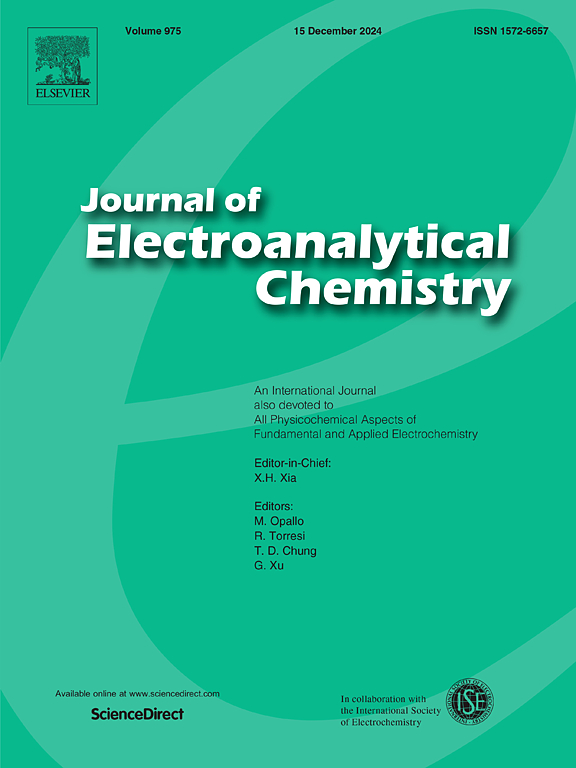Selenium element doping to improve initial irreversibility of C/SiOx anode in lithium-ion batteries
IF 4.1
3区 化学
Q1 CHEMISTRY, ANALYTICAL
引用次数: 0
Abstract
To address the challenge of enhancing the initial Coulombic efficiency (ICE) of C/SiOx anode in lithium-ion batteries (LIBs) and facilitating their widespread application, we developed porous C/SiOx by carbonizing and activating rice husks with H3PO4 as activator. Subsequently, Se was introduced into the porous C/SiOx and deposited both the surface and inner pore walls in order to produce Se@C/SiOx through a solid-phase sublimation method. During the initial discharge process, Se contained within the porous C/SiOx reacts with Li to form Li2Se, which inhibits the formation of Li2O and consequently reduces the thickness of the solid electrolyte interphase (SEI) film. This process facilitates easier diffusion of Li+ through SEI films, enhances ICE, as well as electrical and ionic conductivities, and improves rate performance. After introduction of Se, the ICE of porous C/SiOx electrode rose from 57.02 % to 82.37 %. Additionally, the reversible capacity experienced an increase from 435 mAh/g to 844.4 mAh/g at a current density of 0.1 A/g. Even when subjected to a higher current density of 2.0 A/g, it was able to maintain a significant specific capacity of 574 mAh/g after undergoing 700 cycles.

求助全文
约1分钟内获得全文
求助全文
来源期刊
CiteScore
7.80
自引率
6.70%
发文量
912
审稿时长
2.4 months
期刊介绍:
The Journal of Electroanalytical Chemistry is the foremost international journal devoted to the interdisciplinary subject of electrochemistry in all its aspects, theoretical as well as applied.
Electrochemistry is a wide ranging area that is in a state of continuous evolution. Rather than compiling a long list of topics covered by the Journal, the editors would like to draw particular attention to the key issues of novelty, topicality and quality. Papers should present new and interesting electrochemical science in a way that is accessible to the reader. The presentation and discussion should be at a level that is consistent with the international status of the Journal. Reports describing the application of well-established techniques to problems that are essentially technical will not be accepted. Similarly, papers that report observations but fail to provide adequate interpretation will be rejected by the Editors. Papers dealing with technical electrochemistry should be submitted to other specialist journals unless the authors can show that their work provides substantially new insights into electrochemical processes.

 求助内容:
求助内容: 应助结果提醒方式:
应助结果提醒方式:


